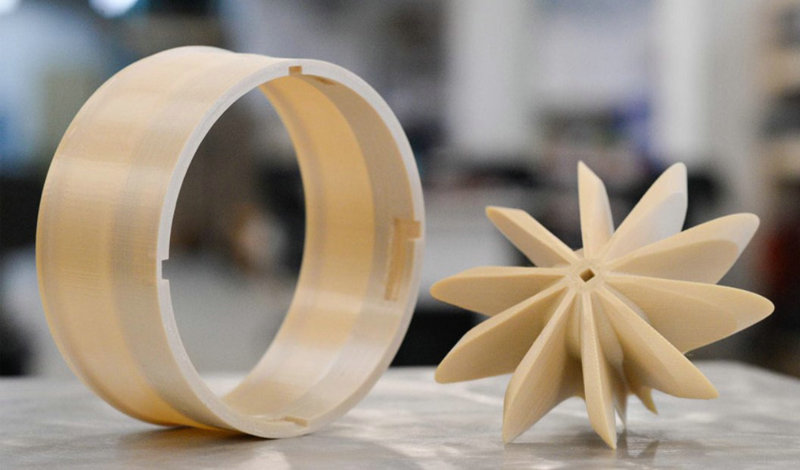
_______________________________________________________________________________________________________________________________________________________________________
PEEK (Polyether Ether Ketone) is a high-performance engineering plastic widely used in aerospace, automotive, and medical industries due to its excellent mechanical properties, high-temperature resistance, chemical resistance, and biocompatibility. However, because of its high melting point and special physical-chemical characteristics, 3D printing with PEEK places high demands on equipment and parameter settings. Below are the key parameters and guidelines for successful PEEK 3D printing.
PEEK has a melting point of 343°C, but the nozzle temperature during printing should be set between 360°C and 440°C.
Too low: Material may not melt properly, leading to poor flow, rough surfaces, and internal gaps.
Too high: May cause excessive melting, dripping, carbonization, and degraded material performance.
Temperature should be fine-tuned based on the specific PEEK brand, printer capabilities, and model complexity.
Set the bed temperature between 120°C and 180°C.
A higher bed temperature helps prevent warping and ensures good first-layer adhesion.
For large or complex prints, go up to 180°C for better bed adhesion.
Maintaining a controlled environment is key.
Recommended chamber temperature: 90°C to 160°C.
High-end PEEK printers can go above 200°C.
Proper chamber heat minimizes thermal stress and warping while supporting crystallization and mechanical strength.
Suggested speed: 20 mm/s to 100 mm/s.
Too fast: Poor layer adhesion, delamination, or fractures.
Too slow: Reduced efficiency and increased costs.
Tips:
First layer: Around 20 mm/s for solid adhesion.
Subsequent layers: 30-60 mm/s depending on model complexity.
Low-precision models: Can use higher speeds for efficiency.
Recommended range: 0.1 mm to 0.3 mm.
Smaller layer height: Higher surface quality and accuracy, longer print times.
Larger layer height: Faster printing, rougher finish.
Guidelines:
For precision models (medical parts, fine components): 0.1 mm – 0.15 mm
For general models: 0.2 mm – 0.3 mm
Suggested range: 10% to 100%
Higher infill: Better strength and stability, more material used.
Lower infill: Lighter parts, cost- and time-efficient.
Examples:
Load-bearing parts: 85% – 100%
Appearance or lightweight parts: 30% – 50%
PEEK is hygroscopic and must be dried before printing.
Dry at 120°C for 4–5 hours to eliminate moisture, which could cause bubbles and voids.
Due to high-temperature printing, PEEK can carbonize and clog nozzles.
Regular cleaning is essential to ensure smooth extrusion and print quality.
After printing, PEEK parts often require finishing such as:
Support removal, polishing, coating, or annealing.
Annealing process improves strength and crystallinity:
Step 1: Heat to 150°C for several hours
Step 2: Raise to 200°C for several more hours
Gradually cool to room temperature
3D printing with PEEK requires a comprehensive approach to parameter settings. By carefully tuning temperature, speed, layer height, and infill density, and ensuring proper material handling and post-processing, you can significantly enhance the quality and performance of printed parts.